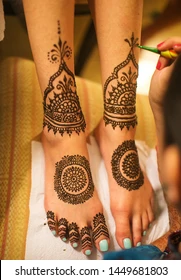Fashion
A Symbolic Islamic art form celebrating culture, beauty, and spirituality

In many Muslim communities across the world, celebrations are not complete without the graceful adornment of stylish art ‘Lele’.
Most commonly associated with detailed henna designs applied to the hands and feet, Lele represents more than decoration; it is a sacred expression of identity, beauty, and belief.
Traditionally, it is most prominently showcased during festive occasions such as Eid celebrations, weddings, and naming ceremonies, where women and girls alike embrace the tradition to mark moments of joy, transition, and spirituality.
While Lele is often admired for its visual appeal, its significance runs much deeper.
The designs are constructed around Islamic artistic principles, repetitive patterns, calligraphy, and geometric arrangements.
These motifs are not merely decorative; they are symbolic. Patterns may represent eternal life, divine wisdom, interconnectedness, and the infinite nature of Allah.
Some designs include verses from the Qur’an or scriptural allusions, transforming the wearer’s body into a living canvas of spiritual meaning.
Women who wear Lele do so with pride, not just as an enhancement of physical beauty, but as a reflection of their cultural roots and inner faith.
From mothers to young daughters, the practice is passed down like a treasured legacy.
Despite the growing popularity of modern body art, Lele retains its unique cultural importance. It is not just a beauty trend, but a continuing practice that speaks to generations of tradition.
By Georgina Boadiwaa Ntim